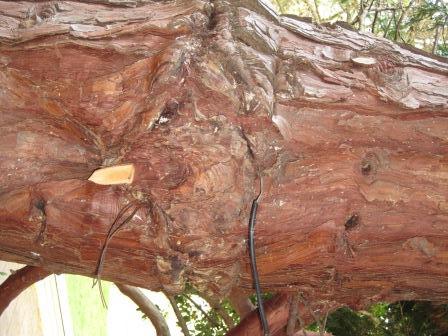Today we have a diagnosis question. Consider this unhappy rhododendron:

While there is more than one problem with this poor thing, the one I’d like you to think about is why the newer leaves are smaller than the old leaves. (They are fully mature.) There are two parts to this question:
1) What is the physiological reason that the leaves are smaller? (In other words, what is directly causing this difference?)
2) Knowing this, what does this tell you about the underlying problem? (This is related to diagnosing what’s happening in the landscape that you could actually see if you knew where to look.)
I hope that’s not too confusing! I’ll monitor the blog over the weekend and add clarification if I need to.
Answer on Monday!









